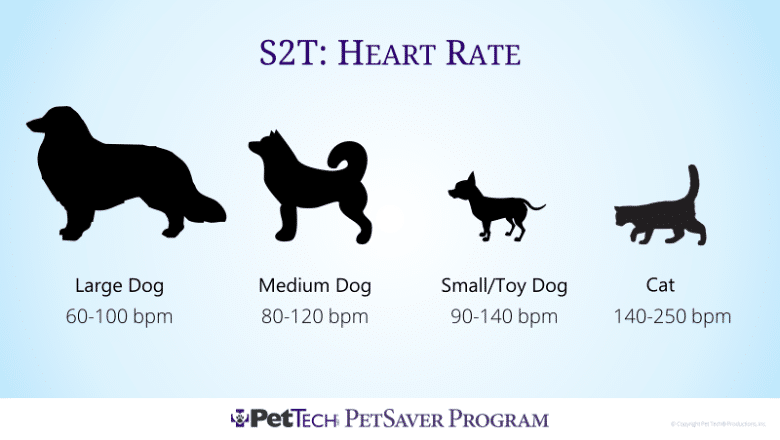Learning Your Pet’s “Normal”
The Pet Tech program has developed a system to help you assess your pet in order for you to be aware of what your pet’s “normal” is. If you know what your pet’s regular vitals and behaviors are, it makes it much easier to distinguish when they are behaving abnormally.
Snout to Tail Assessment
The Snout to Tail Assessment is something you can do at home to learn your pet’s baseline health. It should ideally be done once a week, but if you only do it once a month or even every couple of months that would be ok. The Snout to Tail Assessment is exactly what it sounds like: you track your pet’s health from the tip of their nose to the tip of their tail (and everything in between).
To start the assessment, it helps to imagine your hands being covered in paint. By the end of the assessment your pet should be “covered” in that color paint.
1. Nose
Start with your pet’s nose. It should not be overly dry or cracked in any way.

2. Mouth
If your pet will let you look in its mouth, examine their teeth and gums. Teeth should not have tartar build up on them and gums should be bubble gum pink. Some dogs will have black gums – and that’s okay. There should be no foul odors coming from the mouth.

3. Muzzle & Head
Feel your pet’s muzzle and the top of the head. Feel for any lumps or bumps and any signs of skin problems.
4. Ears
Check your pet’s ears. You should not detect any smell coming from the ears. Check for a build-up of dirt or wax. They should not feel hot to the touch or appear swollen.

5. Back & Spine
Run your hands over the back of your dog and apply gentle pressure down the spine. If there are any issues with the spine of your pet, they will buckle in pain while doing this.
6. Sides
Run your hands down the sides of your pet. You should be able to feel your pet’s ribs. You should not, however, be able to see them visibly or have the ability to put more than one finger between each rib.

7. Tail
Feel all the way down the tail and ensure it isn’t broken. Check for sores on the tail.

8. Legs & Paws
Check each leg and paw. Check for easy range of motion in each leg. Ensure there is no inflammation or redness on the paw pads. Make sure your pet’s nails are at a healthy length.

9. Breathing Rate
To check breathing rate, put your hand on your pet’s chest and count their breathes for 15 seconds. This will allow you to multiply by 4 at the end of the 15 seconds to figure out how many breathes they perform per minute. Dogs should breathe 10-30 breaths per minute and cats should breathe 20-30 breaths per minute.
10. Heart Rate
To check the pulse, find the femoral artery. It is located in the bend of the leg between the dog’s belly and leg. It is best to use your two middle fingers to avoid feeling your own pulse. The process is similar to that of counting breathe rate; count how many beats their heart performs in 15 seconds and then multiple that number by 4 to reach their heart rate (beats per minute).

11. Temperature
Take your pet’s temperature with a plastic digital thermometer. It will have to be done rectally. You can use coconut oil as a lubricant. Dogs and cats should have a temperature of 100.4 – 102.5 degrees Fahrenheit.

Identifying Problems & Staying Proactive
Now that you have a great baseline on your pet, you can identify when problems arise more easily. Things like bleeding are easy to identify. Problems such as heat stroke and seizures, however, may not be as easily identified.
The best thing you can do for your pet’s health is make sure you are prepared in an emergency situation. None of us ever want to have to do first aid or CPR on our pet, but being prepared can put you at ease and also help your pet to be calm when situations arise.
If you complete the above assessment and find issues or concerns with your pet, please contact your veterinarian. It’s always best to play it safe when it comes to the health of your four-legged friends!



